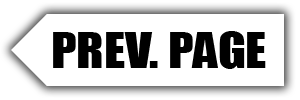
TURBO CARS SWEEP OUTLAW ALL STARS SEASON FINAL
Turbocharged machines swept all honors in the conclusion of the heads-up racing experiment conducted throughout the 2009 season at Gateway International Raceway in Madison, Illinois. The third event in the new Outlaw All Stars series again proved the viability of the facility’s newest spectator-oriented program, which offers a variety of options for heads-up competitors and a truly economical choice for spectators.
The first race in the new program presented no-rules action in three eliminator categories and included five no-handicap Index divisions from ten seconds to fourteen seconds. The success of the initial experiment led to a second meet in mid-summer, which also exceeded expectations in both racer and fan attendance. A third race was then created to end GIR’s 2009 drag racing season and, once again, drivers and spectators responded in droves. The Outlaw All Stars season finale was expanded to two days (including an open test session on the first day), and was conducted in near perfect weather after a solid week of rain.
Designed to offer heads-up racing with a minimal entry fee (and an equally nominal purse), the program proved the desire of competitors to simply show up and race. The OAS series was also geared to promote local drivers as the featured attraction and all three events achieved that goal. Most importantly, the format was created to offer paying fans a fast-paced, concise seven-hour show in which eliminations could be conducted in two-and-a-half hours for a modest $10 admission charge. Incredibly, none of the three events finished later than thirty-five minutes behind schedule!
So successful was the format that no changes in the rules or content of the OAS events with the exception of the addition of two new motorcycle classes for the final race.
An Outlaw Bike division and a 9.5-second Index class added a new dimension to the season-ending show. Both reflected the lack of rules that kept the original categories free from controversy or revision. Both the Outlaw car and bike divisions offered no restrictions other than mandatory NHRA safety regulations. Super Street Eliminator required only true 10.5-inch wide rear tires and the Drag Radial division permitted 13-inch wide, (maximum), D.O.T.-approved rear rubber. Wheelie bars were permitted only in the Outlaw classes. While all four no-breakout divisions were based on eight open qualified positions, the Index classes allowed all entries to compete.
Chassis builder Larry Larson’s amazing street-driven turbocharged ‘66 Nova capped an incredible season with his first Outlaw Eliminator victory in the OAS program’s only eighth-mile division. Dave Heimbach’s turbocharged Kawasaki streaked to the first Outlaw Motorcycle win and veteran Pro Modified campaigner Dan Saitz took his “daily driver” turbo Mustang to Drag Radial laurels. Finally, crowd favorite Mark “Woody” Woodruff wheeled his immaculate turbocharged ‘67 Corvette to an incredible 7.51/197.68 best to win Super Street Eliminator.
Although the official 2010 schedule has yet to be released, Gateway International Raceway Drag Racing Manager Rich Schaefer has already made public his plans to expand the Outlaw All Stars series next season. Here then, is DRO’s coverage of the final event in what will, no doubt, continue to be one of GIR’s most popular new programs.


